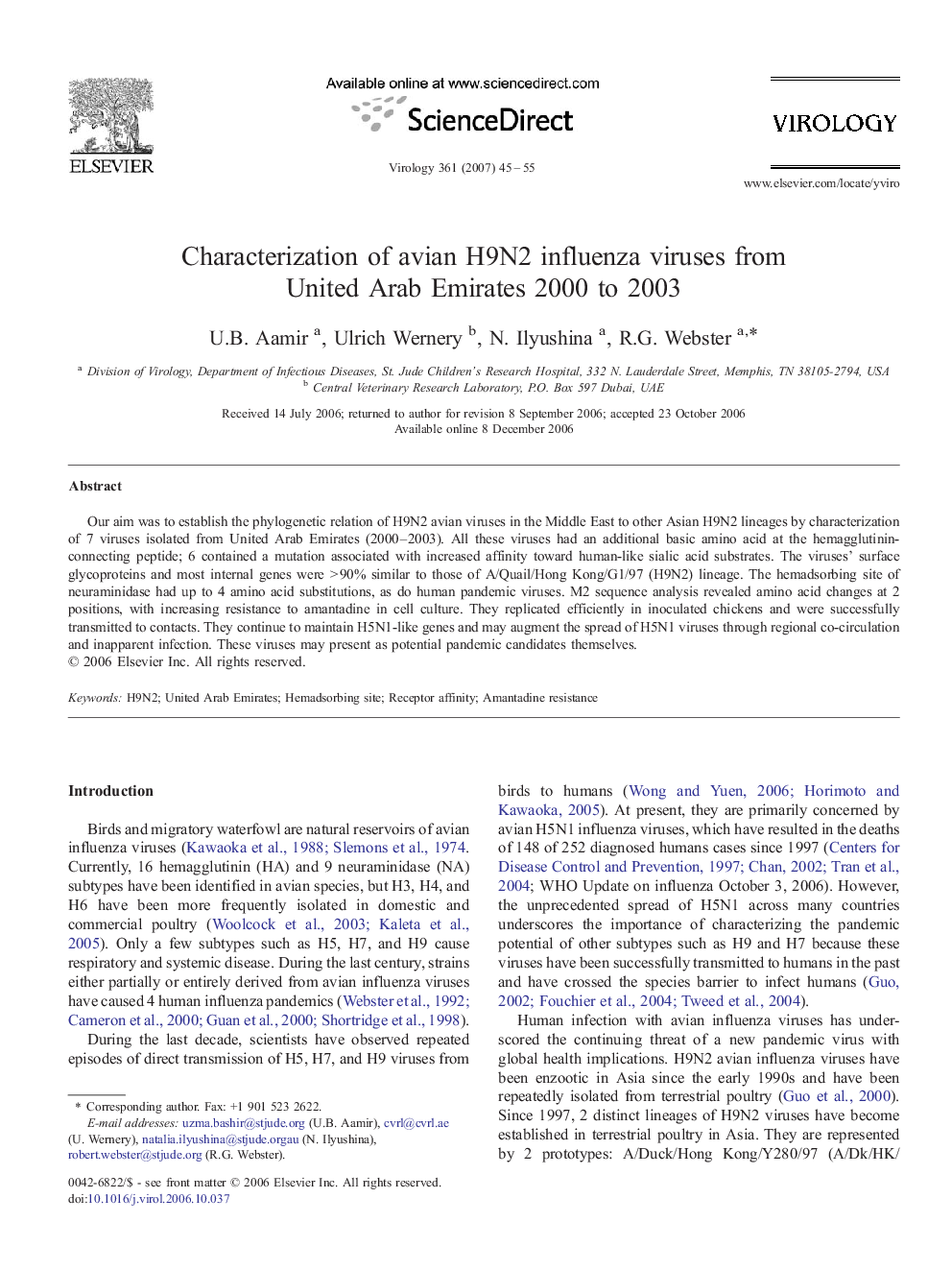| کد مقاله | کد نشریه | سال انتشار | مقاله انگلیسی | نسخه تمام متن |
|---|---|---|---|---|
| 3426904 | 1227351 | 2007 | 11 صفحه PDF | دانلود رایگان |

Our aim was to establish the phylogenetic relation of H9N2 avian viruses in the Middle East to other Asian H9N2 lineages by characterization of 7 viruses isolated from United Arab Emirates (2000–2003). All these viruses had an additional basic amino acid at the hemagglutinin-connecting peptide; 6 contained a mutation associated with increased affinity toward human-like sialic acid substrates. The viruses' surface glycoproteins and most internal genes were > 90% similar to those of A/Quail/Hong Kong/G1/97 (H9N2) lineage. The hemadsorbing site of neuraminidase had up to 4 amino acid substitutions, as do human pandemic viruses. M2 sequence analysis revealed amino acid changes at 2 positions, with increasing resistance to amantadine in cell culture. They replicated efficiently in inoculated chickens and were successfully transmitted to contacts. They continue to maintain H5N1-like genes and may augment the spread of H5N1 viruses through regional co-circulation and inapparent infection. These viruses may present as potential pandemic candidates themselves.
Journal: Virology - Volume 361, Issue 1, 25 April 2007, Pages 45–55